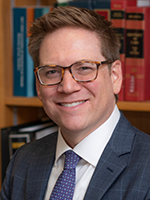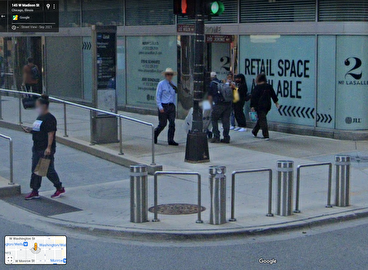
Transportation Safety in a Second-Best Environment

Gregory H. Shill, Professor, University of Iowa College of Law
Transportation policy has not been short on big ideas. Whether the topic is congestion, emissions, or equity, researchers and policymakers have formulated thousands of ambitious plans over the years. Some have even been trialed or implemented in full. One persistent constraint is that most good ideas are not designed to pass through the eye of the relevant needle at scale. Rather, as has been documented by many (here are two of my contributions), they tend to provoke a fatal reaction from key veto holders—municipal governments, transportation regulators, legislatures, courts—that are structurally biased against changes to the status quo. This bias is a major obstacle to effective mitigation of the byproducts of the automobile. It cannot be wished away and, at least in the near to medium term, it’s too deeply embedded even to be voted out of office. What is needed are ideas that can succeed not always by overcoming this constraint, but by sidestepping it.
The need for effective, actionable ideas is felt nowhere more acutely than in transportation safety...In simplified form, second-best interventions are self-consciously designed to reach for the best policy that can be achieved quickly.

A major increase in roadway mortality risk since 2010 has injected new urgency into transportation safety policy. In 2021, U.S. traffic fatalities surged to nearly 43,000, the highest number since 2005 and up about 10,000 from 2010. Worse, the 2010s saw the onset of a pedestrian safety crisis, with pedestrian fatalities rising 46 percent that decade. The need for effective, actionable ideas is felt nowhere more acutely than in transportation safety.
Enter the theory of the second-best. This idea, which emphasizes low-hanging fruit, borrows primarily not from law (my field) but from economics. In simplified form, second-best interventions are self-consciously designed to reach for the best policy that can be achieved quickly. If a policy requires successfully reconfiguring fundamental political dynamics, for example, it cannot meet this standard by definition. Second-best interventions yield the highest expected value when also accounting for obstacles and delays. A focus on the second-best is not to suggest that “bigger,” optimal ideas to advance safety and other purposes of transportation policy are not needed. But with some of the biggest and best ones already more than a century old (for context, the world’s first subway opened in London in 1863), we also need to develop a sense of the minimum changes that could be implemented quickly to start saving lives.
Following are some changes that stand a chance of not only saving lives in principle, but also of avoiding some of the policy bottlenecks that have bedeviled past interventions in practice. Some specific proposals are included, but the concepts are pitched at a high enough level to be adaptable to local circumstances. Each of these proposals could be supported by funding in the landmark Bipartisan Infrastructure Law (BIL).
Physically Protecting Pedestrians
Pedestrian deaths surged 54 percent between 2010 and 2021. This immense increase in non-occupant vehicle fatalities demands an effective, immediate response. Transportation policy reformers have suggested countless changes to street design, speed limits, and land use that would improve pedestrian welfare, but precisely because they have focused on transforming the street into a livable public space (a big lift!), they have sometimes overlooked more narrowly targeted solutions.
- Billions of bollards. The moment demands sidewalk infrastructure that directly protects pedestrians from vehicle impacts. For years, we have had something similar: sidewalk infrastructure that directly protects drivers and passengers from vehicle impact, like signposts that break away upon collision. This makes the absence of similar protections for pedestrians—who unlike car occupants have no other protection from multi-ton vehicles—all the more puzzling. Bollards (whose effectiveness is documented humorously, if not scientifically, by a dedicated Twitter account) provide some defense. In areas of high pedestrian traffic, their installation should become standard in the U.S., as in places that have far better traffic safety outcomes than ours (America’s are by far the worst in the wealthy world and more than twice as bad as Canada’s). One virtue of bollards (as opposed to, say, protected bike lanes) is that they demand little to nothing of drivers. Of course, care must be taken to prevent them from obstructing the free flow of wheelchairs. But in most places that should not be a problem. Ultimately, they should become as common in urban areas as guardrails are on curves and bridges.
- Better streetlights. Four out of five fatal pedestrian collisions take place outside of daylight conditions—in darkness, at dusk, or at dawn. Many factors beyond lighting contribute to this statistic, but an improvement in lighting would help. A similar proportion of pedestrian fatalities occurs in urban areas, and many of those along high-risk corridors. Thus, agencies interested in adding streetlights have a good idea of where to start.
Increase Seat Belt Use
In 2020, unbuckled vehicle occupants accounted for nearly half of all vehicle occupant fatalities in the United States. It can be hard to understand why someone would not take the simple step of buckling up. Those killed when not wearing seat belts skew young—among young adults (ages 18 to 34), an above-average share of fatalities (60 percent) was among the unrestrained. It may be feasible to increase compliance. Some studies indicate that switching seat belt laws from secondary enforcement to primary may increase compliance by double-digit percentage points. There may even be potential to do more. With many of the studies on the subject outdated, underpowered, or both—and compliance rates stagnant—new funding specifically directed toward “Click It or Ticket” and other media campaigns in the BIL may make seat belt compliance an area ripe for exploration.
Look to Solutions That Target Outlier Behavior, Not the Mainstream
Americans face a substantially elevated risk of death or serious injury on our roads relative to residents of peer countries. Whether you’re a driver, passenger, or pedestrian, you are at higher risk than you ought to be.
But while we are all at risk, some of us create a lot more risk than others. Personal responsibility has received a bad rap in transportation safety circles because for decades it was (and in some circles, continues to be) used as an excuse for policy inaction. There’s some danger that we’ve overcorrected, however. The intuition behind the approach that has supplanted personal responsibility—a “safe system” approach—is that a system of transportation designed for safety (with narrower or fewer lanes, lower speed limits, and protected bike lanes) will produce, on average, safer behavior. A mountain of evidence supports this approach, and it must be continued. But this approach suffers from a major limitation: it does not address the behavior of outliers—namely, aggressive drivers. Most of us don’t drive double the speed limit or run red lights on purpose, but a small minority do, and there is reason to believe this fraction is responsible for a disproportionate share of traffic fatalities. Their conduct should be a bigger target of regulation.
The threat of outlier behavior comes into focus when considering how it interacts with other inputs into transportation safety. Because U.S. law, culture, and infrastructure all favor driving larger and heavier vehicles over longer distances at higher speeds, we can expect a higher number of people to engage in behavior that is reckless. U.S. roadways operate as a Wild West (where social norms are not sufficient to curb outlier misbehavior) but are treated by regulators like a backyard BBQ (where they generally are).
Further, it is more straightforward to craft interventions that leave the responsible majority alone and target the reckless minority. Studies show much of this can be accomplished through automated enforcement, which also reduces friction between police and motorists.
Policy Changes That Pay Double
Precisely because some of the fundamental challenges of transportation safety are deeply rooted, it can be productive to focus on attacking the structures that lock them in place at the same time as improving safety in its own right.
For example, speeding, drunk driving, and drugged driving all contribute to a huge proportion of vehicle deaths. We need to get more creative in cracking down on these behaviors. An experiment in Sweden that awarded some speeding fine revenue to non-speeding drivers yielded promising results, for example. At the same time as they pay their car registration, drivers could also be required to buy a modestly priced bond (say, $100) that would be refunded to them the following year or rolled over if they had no violations for speeding or impaired driving. They could even be paid a generous annual interest rate (say, 10 percent), with the interest supplied by forfeited bonds.
The immediate purpose of these programs would be to increase safety. But they would also have the benefit of differentiating the minority of drivers who engage in high-risk behavior from the responsible majority. This final suggestion admittedly tests the limits somewhat of the second-best policy model, but it belongs in this group (in my view) because it seeks to narrow the scope of conflict while delivering high expected value.
The new BIL provides more opportunities for change than ever before. Now we need leaders to step up and seize them.
Even taken all together, the proposals above are no substitute for more systemic and ambitious solutions, such as redesigning our roads for safety; properly funding and effectively administering public transit in cities and towns; mandating safer vehicle design and technology; and addressing cultural and legal impediments to the reform of our transportation system. Although second-best, they are real solutions, and they can be implemented with far less friction than many that are superior in theory.